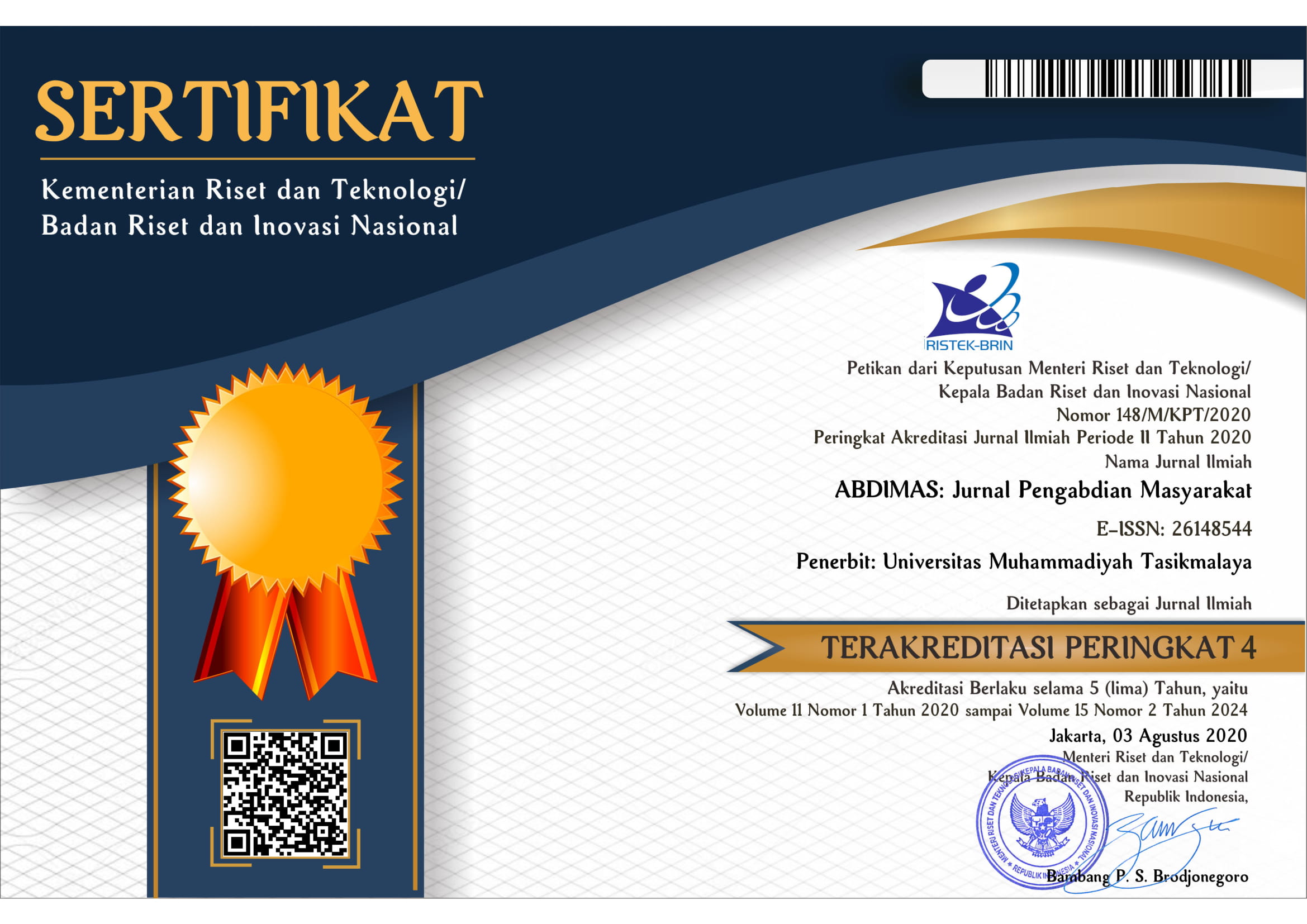Training on Cow Manure Liquid Organic Fertilizer Processing and Application on Green Spinach Plants in Alue Ambang Village
DOI:
https://doi.org/10.35568/abdimas.v5i1.1870Keywords:
Pelatihan, pupuk organik cair, pemberian pupuk organik cair, kotoran sapiAbstract
Alue Ambang is a village in Mukim Teunom, Teunom District, Aceh Jaya Regency, Aceh Province, Indonesia. Based on the results of a field survey, the soil condition in the village garden is sandy loam soil. Sandy loam soil is able to quickly absorb water but cannot receive nutrients for plants. So that this type of soil requires additional fertilization. One of the types of fertilizer offered is organic fertilizer in the form of liquid. Liquid organic fertilizer (POC) is produced from the decomposition of organic matter such as leaves and animal waste. The purpose of this service activity is to provide knowledge and innovation about the importance of converting livestock waste into liquid organic fertilizer and fertilization methods with correct and appropriate concentrations. This activity was carried out for 3 months, attended by 8 farmer cadres and 13 village development students. The method used is direct training and practice. The several stages in this activity are: (1) survey stage, (2) training, (3) POC manufacture, (4) POC application, (5) harvesting and (6) processing. The result of this service activity is that the cow dung POC and farmer cadres get an understanding of the importance of utilizing cow dung waste as a liquid organic fertilizer and how to use house yard land as an effort to fulfill family food in Alue Ambang Village.
Downloads
References
Ashari, Saptana, & Purwantini, TB (2012). potential and prospect of using yard to support food security. Agro-Economic Research Forum , 30 (1), 13–30.
BPS. (2021). teunom sub-district in 2021 figures . Central Bureau of Statistics for Aceh Jaya Regency .
Dewi, I., & Bachelor, I. (2015). Factors Driving the Conversion of Rice Fields into Non-Agricultural Land (Case: Subak Kerdung, South Denpasar District). Journal of Agribusiness Management , 3 (2), 26303.
Fitriansyah, M. (nd). Sandy Clay Soil Behavior in Banjarmasin Due to Interface Style on Geotextile . 12 (c), 1–10.
Gunawan, T. (2017). efficacy and benefits of spinach .
Indawati, N., Kusumawati, ED, & Susanto, WE (2016). Utilization of Cow Manure into Biogas and Organic Fertilizer. Journal of Community Empowerment , 1 (1), 32–37.
Putra, BWRIH, & Ratnawati, R. (2019). Making Liquid Organic Fertilizer from Fruit Waste with the Addition of EM4 Bioactivator. Journal of Environmental Science And Technology , 11 (1), 44–56.
Rahma, meci yuniastuti, & Damayanti, F. (2021). effectiveness of organic goat manure and goat urine liquid organic fertilizer on the growth and production of red spinach (Athernanthera amoena voss). Planta Symbiosa , 3 (1), 54–65.
Roidah, IS (2013). Benefits of Using Organic Fertilizer for Soil Fertility. Bonorowo Journal , 1 (1), 30–43.
Rukmana, R. (2010). Spinach. Independent Publisher .
Simanjuntak, A., RR, L., & Purba, E. (2013). response of growth and production of shallot (alium ascalonicum l) to application of NPK fertilizer and coffee rind compost. Online Agrotechnology , 1 (3), 362–373.
Taufika, R. (2011). Testing of several doses of liquid organic fertilizer on the growth and yield of carrots (doucus carota L.) . 1 (2), 1–10.














